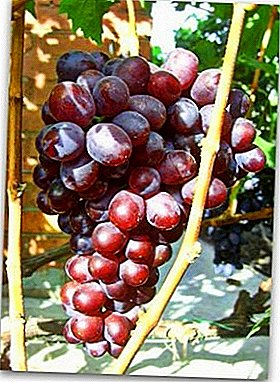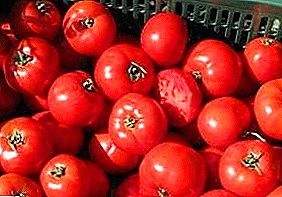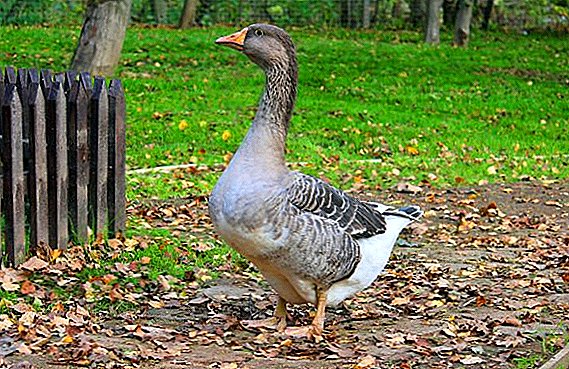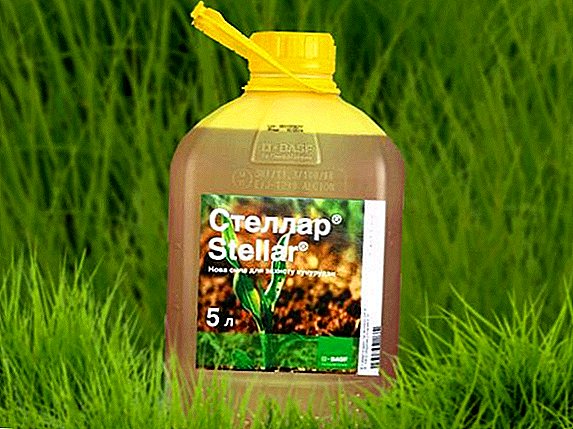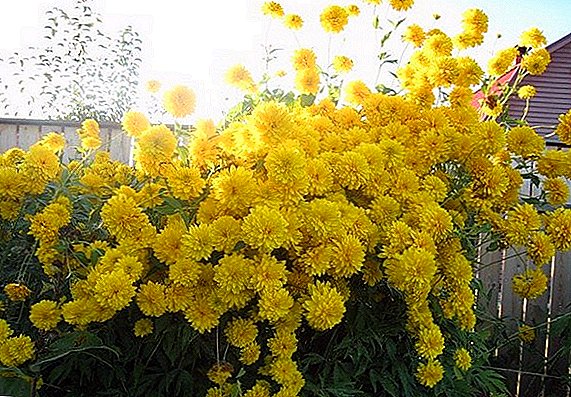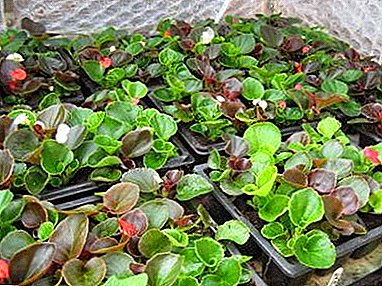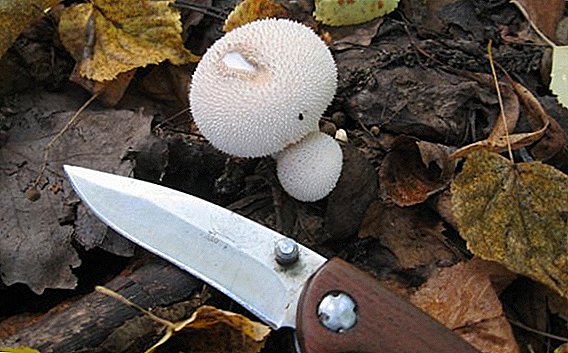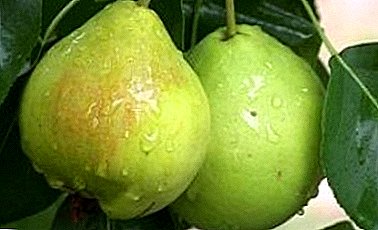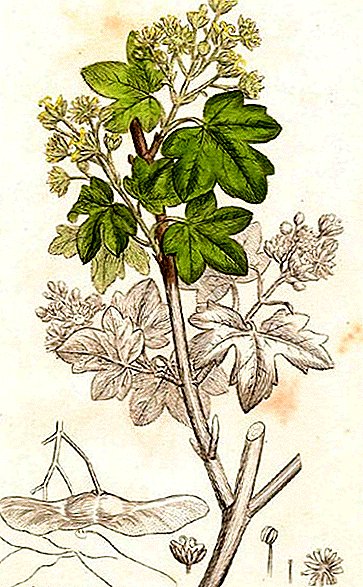 Slender camp, an unusual form of foliage, as well as perfectly rounded crown - these are the main advantages of maples in landscape gardening design. Despite their size, these trees are considered to be style standards. In particular, this concerns a field or, as it is also called, a flat variety. Consider how to ensure proper fit, care of this culture and what it is.
Slender camp, an unusual form of foliage, as well as perfectly rounded crown - these are the main advantages of maples in landscape gardening design. Despite their size, these trees are considered to be style standards. In particular, this concerns a field or, as it is also called, a flat variety. Consider how to ensure proper fit, care of this culture and what it is.
Botanical description
In scientific literature, the plant is called field maple (Ácer campéstre), and in everyday life it is called unclean or companion.  The beautiful regular forms of these representatives of the Sapindov family, along with their elegance, will captivate every landscape designer. Such trees are depicted on postcards.
The beautiful regular forms of these representatives of the Sapindov family, along with their elegance, will captivate every landscape designer. Such trees are depicted on postcards.
Did you know? Since ancient times, the tribe of the Iroquois worshiped maple. He was revered as a source of well-known maple syrup, as well as strength and beauty. Many sought to acquire any household object from the wood of this plant. It has long been considered a haven for the souls of deceased relatives who came to the living. Therefore, every year the Iroquois celebrated a day of gratitude for the maple, which in their language sounded Otadenone-non-pro-niy-vatey.
Here are the main characteristics of flat maple:
- height - 10-15 meters;
- crown volume - up to 8 meters;
- trunk - thin, straight, no more than 60 centimeters developed in diameter, covered with gray bark with a faint brown tinge. Mature trees appear small longitudinal cracks;
- crown - round, medium dense;
- leaves - five- or three-lobed, very dense, from 4 to 17 cm long and from 5 to 10 cm wide. From the upper side they are distinguished by a dark green shade and glossy surface, and from the lower side - by a light tonality and weak hairiness. In autumn, maple foliage changes colors to burgundy and golden crimson;
- kidneys - egg-shaped, olive-brown in color, up to 5 mm long;
- inflorescences - appear in April and May after foliage. Consist of 15-20 erect panicles, each of which reaches a diameter of 3-4 cm. Maple flowers are yellow-green with a large nectar disk. Pedicels short and strongly fleecy. Sepals resemble the shape of a stretched ellipse. Petals narrow and shaggy at the edges. The flowering period lasts about 2 weeks. After that, on pollinated flowers, a bare or fuzzy ovary appears;
- fruit - sickle curved or straight lionfish. Reaches in length up to 3 cm and in width - up to 1 cm. One thousand seeds weigh about 50 g. The period of fruiting begins in early autumn;
- growth rate - moderate with an average annual growth of about half a meter in height and 40 cm in width;
- lifespan - in favorable conditions, a tree can survive up to 250 years of age, but in most cases its longevity is measured by one century;
- endurance - high resistance to frost and drought. Adapts to shade;
- requirements for conditions - prefers well lit places. Feels comfortable on nutrient-rich soils, can withstand slightly saline substrates. Reacts badly in very wetlands.




Did you know? For the Japanese, maple is not only an aesthetic decoration of the garden, but also gastronomic delight. In this country, it is customary to prepare snacks from maple foliage. Initially, it is harvested, then kept for about a year in barrels of salt, and only after that is coated with a special sweet dough and fried in a fryer.
Habitat and habitats
From where the field maple came from, the botanists today find it difficult to answer. Indeed, for many millennia, it was known to almost the entire Eurasian continent. Wild planting could be seen in mixed and deciduous forests of many European countries, the Caucasus, Asia Minor and even in North African regions.
Therefore, most scientists agree that the range of these plants occupies a fairly large area. Its borders pass in the UK, Scotland, the Scandinavian Peninsula, Sweden, Ukraine, Russia and stretch all the way to the Caucasus.
In our area, self-sowing is most often found in Kiev, Zhytomyr and Volyn regions. Further to the north, these plants are represented only by domesticated specimens.  Modern designers widely use these trees for landscaping park areas, especially since they grow very comfortably on the black-earth strip.
Modern designers widely use these trees for landscaping park areas, especially since they grow very comfortably on the black-earth strip.
Wild maples are located on sunny forest edges, in coastal and steppe zones, sometimes they can be found in mountainous areas at an altitude of up to 2 kilometers from sea level.
Did you know? The first coin of the Democratic Republic of the Congo was made of maple. She was released in 2005 and is still the official means of payment. Its face value is 5 francs.
Use in landscape design
All-season decorativeness of maples contributes to their distribution in landscape design. The trees become especially beautiful in the fall, when their foliage is transformed into festive and elegant colors.
In spring, during flowering, they are not inferior to cherries and plums. In addition, the culture is well adapted to urban conditions. She can safely claim to be the main decoration, as well as the source of the shadow in the territory entrusted to her.  A characteristic feature of the plain maple is its versatility. Large-sized plant looks good in single and group plantings, and also it is an excellent material for the formation of a hedge.
A characteristic feature of the plain maple is its versatility. Large-sized plant looks good in single and group plantings, and also it is an excellent material for the formation of a hedge.
Specialists call its extreme viability the only drawback of the variety. This means that the crop is prone to self-seeding, and its grains are easily spread by the wind hundreds of kilometers from the parent root and quickly adapt to new conditions.
Young shoots are actively developing. Therefore, if you do not control the breeding of the maple, it will capture the entire garden, turning it into wild thickets.
Did you know? Maple trees can foretell the weather: if dew drops appear on the tree buds, it will rain in a few hours.
Paklens are often used for bonsai. These trees tolerate pruning and transplanting.  Bonsai-style use of wood. For industrial purposes, their wood is suitable for furniture and kitchen equipment. It has high decorative qualities, ease of processing. Among the disadvantages of maple material joiners call the lack of a clear texture.
Bonsai-style use of wood. For industrial purposes, their wood is suitable for furniture and kitchen equipment. It has high decorative qualities, ease of processing. Among the disadvantages of maple material joiners call the lack of a clear texture.
Many land owners are happy about the appearance of a flat maple near their apiary. The fact is that culture is enrolled in the ranks of a first-class honey plant. A single adult tree can provide a hive with 10 kilograms of nectar.
Decorative forms
The undemanding nature of the field maples, their decorative characteristics and endurance aroused interest among many breeders.
As a result of long-term experiments, they managed to get different varieties that amaze the imagination with the color gamut, foliage shape, and also the peculiarities of crown and stem development. Today, about two hundred varieties of this culture are known.
Important! Experts consider oak, birch, elm, fir, larch, and spruce to be ideal neighbors for tall forms of the field variety. But the dwarf varieties are suitable for stony gardens and look good in rockeries, surrounded by bergenia.
Here are the most popular ones:
- "Albovariegatum" - characterized by non-standard coloring of leaves. In autumn, it is golden yellow, and in spring and summer it is dark green with large white strokes.

- "Carnival" - grade developed in Holland. It is distinguished by a white edging of foliage, which in the period of decay of deciduous buds becomes pale pink.

- "Compactum" (there is a parallel name "Nanum") - a feature of the variety is in the round shape of the crown with maroon-yellow autumn foliage. It is considered a dwarf form, since a tree above 2.5 m does not develop.

- "Elsrijk" - characterized by small size of the foliage, which gives thickness to the crown, and its lines become chiselled.
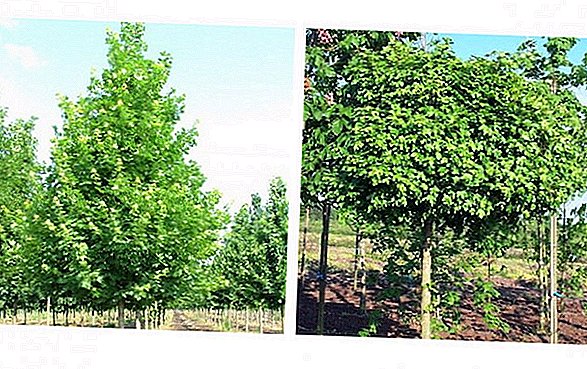
- "Evenly Red" - is a development of English breeders, deserves the attention of purple shades of autumn leaves.
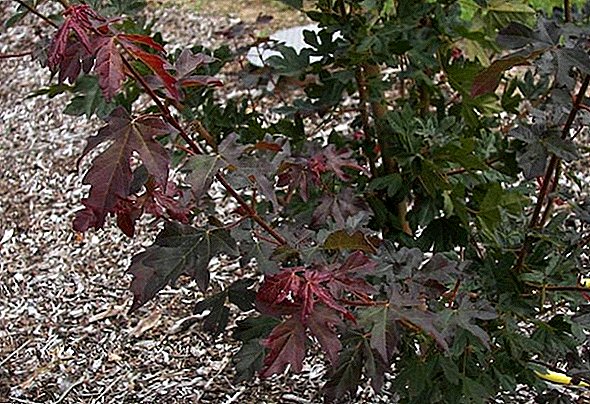
- "Green Weeping" - This is a weeping variety of flat maple, reaching a maximum height of 3 meters.

- "Microphyllum" - represents a low tree (up to 3 m in height) with smaller, compared to the classical variants, leaf sizes.
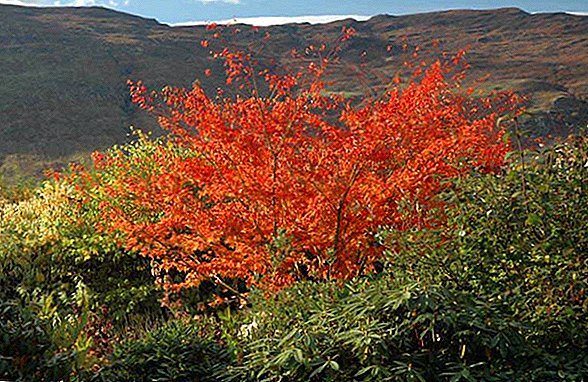
- "Postelense" - noteworthy non-standard color sheet plates. In the spring, at the beginning of the growing season, they are golden. In summer they turn green, and in the fall they return to their original tonality.
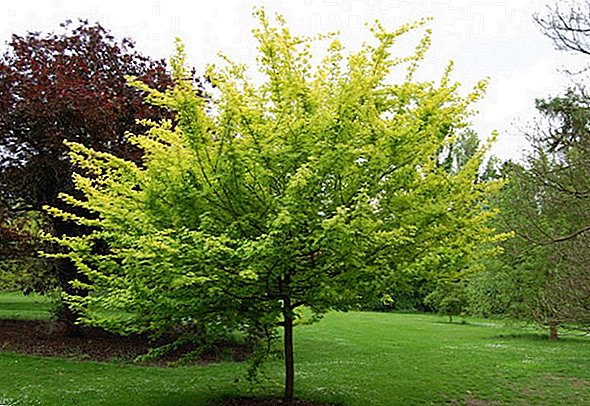
- "Pulverulentum"- has a high decorative effect. The leaves of this variety are densely covered with white specks. Because of this, the young leaves seem cream. The variety is most often represented by bush forms. At the same time the plant develops more in breadth than up.

- "Queen Elizabeth" (it has the parallel name "Evelyn") - it is characterized by a fast pace of development, a narrow pyramidal crown shape and increased leaves, as compared with the classical variant.

- "Red Shine" - it is remembered by green-brown color of foliage.

- "Schwerinii" - at the beginning of the growing season the leaves are purple, and closer to the autumn they turn green.
Important! Poorly chosen place for planting can significantly affect the decorative plants. For example, if you plant decorative varieties of field maple in the shade, its foliage will lose its color features and specks. In such a place you will have the usual green tree with a slow pace of development.
Growing conditions
Wild maples can adapt to different conditions. But if we are talking about cultivated forms, we will have to take care of everything necessary for their growth with full responsibility. Therefore, the choice of a place for planting at 80% decides the further fate of the seedling.
So, let's look at all the requirements of culture one by one:
Lighting
The species can grow in the shade, but for full development it needs a lot of light. Therefore, experts advise to choose well-lit areas for planting.
The soil
Ideal sites with enriched chernozem neutral acidity.  Trees also take root well on loamy substrates. Poorly adapted in sandy soil.
Trees also take root well on loamy substrates. Poorly adapted in sandy soil.
Find out what is important soil acidity for plants, how to determine the acidity of the soil at the site, how to deoxidize the soil, as well as how to improve soil fertility.
Groundwater
It is important when planting seedlings to consider the location of groundwater. The fact is that the plant does not tolerate swampy areas and excessive moisture. Ideally, the reservoir can be located at a depth of 2-2.5 meters from the surface.
In the event that these figures are much smaller, the root system of the plant will be constantly at risk of infection by fungi and bacterial infections.
In addition, a humid environment, like a magnet, attracts harmful insects. In this case, when it is impossible to choose another place for planting, experts advise to choose dwarf forms of maples and lay about 20 cm of crushed stone drainage into the landing pit.
Wind protection
Field maple varieties comfortably grow only in areas protected from winds and drafts. Especially when it comes to their decorative forms.  Wild plants are more enduring, they can survive short-lived droughts, severe frosts and wind gusts. It should be noted that maple wood is not very dense and strong.
Wild plants are more enduring, they can survive short-lived droughts, severe frosts and wind gusts. It should be noted that maple wood is not very dense and strong.
Important! To protect the crop from common diseases and pest attacks, it is recommended that the crown and stem be treated with a Nitrafen solution or copper sulfate before flowering.
Landing rules
In order for a variety to develop well, it needs to please the planting time and conditions. Therefore, before taking up a shovel, you need to carry out a number of preparatory work. We will understand everything in stages.
Landing time
Planting maple seedlings can be planned in spring or autumn. It should take into account the climatic features of the area and weather conditions.  In the case of spring rooting, experts recommend doing all the necessary work when the weather is stable and warm and the earth warms to 11 degrees Celsius.
In the case of spring rooting, experts recommend doing all the necessary work when the weather is stable and warm and the earth warms to 11 degrees Celsius.
The optimal period is the second decade of April.
Such planting is favorable for the development of the tree, because before the onset of heat it has the ability to adapt to new conditions.
Important! If you plant maple trees in the spring, water them while planting until the ground absorbs moisture. This will protect the plant from weathering the root system and drying out.
The disadvantage is only an urgent need for moisture. Therefore, it is important to ensure abundant watering of the crop during planting and to monitor the condition of the tree circle during the first months.
When autumn planting should catch before the onset of cold weather and frost. It is desirable to carry out rooting in mid-October, leaving at least 2-3 weeks to a cold snap. Otherwise, the plant will not have time to settle down and die. 
Site preparation
When the appropriate section is selected, start preparatory work on it. They consist in processing the soil. That is, you first need to clear the area from debris and plant residues and dig up the soil. Ideally, it should be loose, fertile and with neutral acidity.
We advise you to find out what nuances of cultivation of Ginnal maple, Flamingo, as well as Norway, red, silver, Tatar, Japanese, silichion and Manchurian maples.
In highly oxidized areas it does not hurt to add lime powder or dolomite flour. Per square meter will need from 150 to 300 g of the substance, depending on the pH of the soil.
If you plant a sapling in the spring, a month before that, dig a hole, half-fill it with a layer of drainage and nutrient substrate.
Then cover with plastic wrap to form inside the desired microclimate. This nuance will help the tree to settle down quickly and start new root processes.
Such manipulations can be done in the fall. Thus, during the winter-spring period, the earth will pass through natural stages, which will help the early rooting of the young seedling.
Important! When group planting between plants need to leave a distance of about 2-4 meters. If you are going to form a maple fence, you should leave 1.5-2 meters between the roots..
Landing
The whole rooting process seems very simple, but in fact fatal mistakes are often made, as a result of which the tree does not take root. Therefore, we recommend that you strictly follow the rules below:
- Dig a planting hole, the dimensions of which will correspond to the root system of the seedling. She does not need excessive freedom or constrained conditions. The classic version provides for the width and height of the hole within 70 centimeters.
- Leave the plant for a few hours in a container with water, then treat its roots with a clay mash. If you are dealing with weakened specimens, you can first add a growth stimulator to water (“Kornevin”, “Emistim”).
- At the bottom of the pit lay about 10-20 cm of drainage material (broken brick, expanded clay, crushed stone). Then lay a similar layer of soil thickness. It is prepared from equal parts of humus, sod land, river sand and peat compost. On fertile plots you can get by with a substrate of hardwood, sand and peat.
- For a better germination of green pet, you can feed the nitroammofoskoy. 120-150 g of the substance is enough for 1 planting pit.
- After that, the prepared seedling is lowered into the pit, its root system is straightened and covered with fertile soil.
- It is important to plenty of water the young plant and trampled fresh soil. In order to fill the root gap, it is recommended to shake the barrel.
- The final stage of planting is to re-powder the watered wood with a primer and make a shallow groove on the borders of the trunk circle. It is necessary for the convenience of watering. It is important that the root neck of the maple does not deepen. It should be at ground level.
Video: how to plant a maple (for example, ginnal maple)
Did you know? In ancient Slavic mythology, maple is associated with a haven of the human soul. Old Believers say that every person can turn into this tree after death. That is why maple wood has never been used for firewood and coffin. It was believed that the plant in the yard symbolized the strength and capabilities of the owners.
Maple care
All plants from the Sapindov family are not demanding care. They easily adapt to any conditions. But gardeners should take into account that in favorable conditions, the culture develops fully, which affects its decorative qualities.
For this field maple need to ensure timely watering and feeding. Also care is needed for tree trunks in the garden and the preparation of young seedlings for wintering. We will understand everything in order.
Watering
Despite the fact that the cultivar reacts painlessly to dry soil, it is necessary to monitor its moisture level. To this end, young trees in the first months after planting are watered often and abundantly. In the future, the number of irrigations reduced to 1 time for 7 days. It is important to focus on weather conditions.  According to experts, after planting and in a drought, each root needs about 20 liters of water. And with normal rainfall maple can be watered once a month, pouring 10-15 liters.
According to experts, after planting and in a drought, each root needs about 20 liters of water. And with normal rainfall maple can be watered once a month, pouring 10-15 liters.
Did you know? The Serbian superstition says that if, without reason, the accused person embraces a dry maple, he will certainly turn green. And when in the future it touches the unfortunate or offended, the tree dries again.
Top dressing
For all maple species, you need at least 2 supplements per year. The first is carried out in spring, when biomass buildup is important, and the second is at the end of summer, when the plant needs to be prepared for wintering.
Spring fertilizer can be organized with the help of any nitrogen-containing substances (including organic ones), and autumn fertilizer with the help of purchased mineral complexes.  If during planting additional nutrient supplements in the substrate were not used, the maple will need to be fed next spring with a mixture of 40 g of urea, 25 g of potassium salt, 50 g of superphosphate.
If during planting additional nutrient supplements in the substrate were not used, the maple will need to be fed next spring with a mixture of 40 g of urea, 25 g of potassium salt, 50 g of superphosphate.
This tandem can be used with each subsequent spring feeding. In summer, the tree is fertilized by Kemira wagon. On 1 square meter of the circle of the circle will need about 100 g of substance.
Soil hygiene
It is important in places where field maples grow, regularly carry out a shallow loosening of the earth. This procedure is done during the weeding and after wetting. It improves the oxygen supply to the roots and prevents soil compaction.
One of the most important points in garden care is the prevention and removal of weeds. Learn more about the biological groups of weeds, as well as how to deal with them with folk remedies, special tools and herbicides.
In addition, it is important to timely mulching pristvolnyh circles. For the first time it is done immediately after landing. For this purpose, peat is used, which is laid in a layer up to 5 cm.
Pruning
In the formation of the crown, these trees do not need, because of the nature of ideal forms.
But sanitary pruning is important to them every year. It is carried out in the spring or in the fall and consists in the removal of old, dry, frost-bitten or diseased branches and pests. 
Protection against diseases and pests
With abundance of moisture in conditions of frequent rains, maple is exposed to powdery mildew and black spot. He is also vulnerable to the attacks of whitefly, leaf weevil, aphids and mealybug.
Save the plant can be timely processing chemicals. In the case of fungal, viral and bacterial infections, one of the fungicides will come to the rescue:
- Teldor;
- "Melody Duo";
- "Antrakol".
- "Come on."
Important! Excess moisture and mineral fertilizers, as well as improper care are the main causes of cultural diseases.
If a tree has become a victim of harmful insects, then at the very first symptoms it should be treated with any insecticide:
- Aktara;
- Actellic;
- Bankol;
- "Envidor";
- "Calypso".
Protection against rodents
So that the young trunks do not suffer from hungry hares and mice, they are wrapped in a half-meter piece of toli. As an alternative, you can use spruce branches, which are tied to cultivated trees.
Preparing for the winter
All garden specimens of this culture to the age of five require special preparation for winter. Old trees can winter without shelter. Preparing for winter begins in summer when the plant is fed with stimulating high winter-hardiness fertilizers.
But the young saplings cannot be saved by mineral complexes alone. Their thin branches can not withstand the harsh snowless winter. Therefore, experts recommend in the fall to take care of a new layer of peat mulch.
We recommend to read why you need to carry out soil mulching.
And it is also important to cover up the maple trunk with a spruce branch, hiding the root neck securely. In subsequent years, the shelter will need only the standard forms of field maple. They are wrapped up to the crown with multi-layered sacking or spandex. As growth grows, trees become more resistant to low temperatures.  At any time of the year, maple is a worthy decoration of landscape areas. This is a true delight for aesthetes-perfectionists. But for the correctness of the shapes and colors, culture needs to provide suitable conditions. Our recommendations will help you with this.
At any time of the year, maple is a worthy decoration of landscape areas. This is a true delight for aesthetes-perfectionists. But for the correctness of the shapes and colors, culture needs to provide suitable conditions. Our recommendations will help you with this.
Feedback from network users














